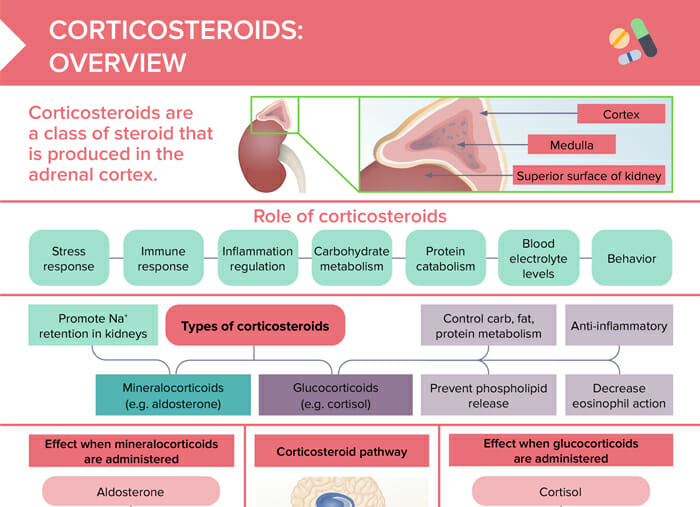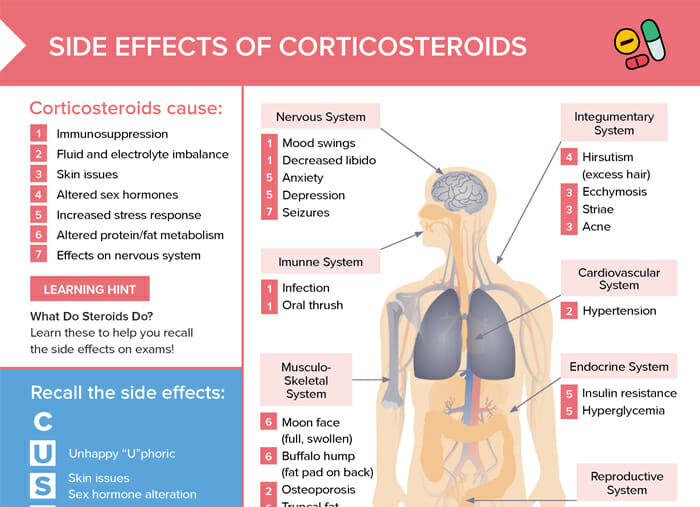What are corticosteroids (steroids)?
Corticosteroids are a type of steroid hormone that are produced by the adrenal glands. They are involved in a wide range of physiological processes, including the stress response, immune response, regulation of inflammation, carbohydrate metabolism, protein catabolism, blood electrolyte levels, and behavior.
2 main types:
- Glucocorticoids (e.g. cortisol) reduce inflammation and suppress the immune system.
- Mineralocorticoids (e.g. aldosterone) help maintain salt-water balance in the body).
Corticosteroid medications mimic the effects of natural corticosteroids and are used to manage a variety of conditions, such as asthma and allergies, but can have significant side effects.
Related videos
What are the indications for corticosteroids?
Corticosteroids are used to reduce inflammation and suppress the immune system. They are used in a wide variety of conditions, including asthma, COPD, rheumatoid arthritis, lupus, multiple sclerosis, allergic reactions, and as part of the treatment protocol for many cancers.
What are the side effects of corticosteroids?
- Nervous system:
- Mood swings
- Decreased libido
- Anxiety
- Depression
- Seizures
- Immune system:
- Infections
- Oral thrush
- Musculoskeletal system:
- Moon face
- Buffalo hump
- Osteoporosis
- Truncal fat
- Muscle wasting
- Integumentary system:
- Hirsutism
- Ecchymosis
- Striae
- Acne
- Cardiovascular system: hypertension
- Endocrine system:
- Insulin resistance
- Hyperglycemia
- Reproductive system:
- Amenorrhea
- Impotence
- Infertility
How can nurses help manage side effects and risks in clients taking corticosteroids?
- Patient education about side effects, the importance of taking the medication as prescribed, and not stopping it abruptly
- Monitor for side effects
- Advise about the need for regular check-ups
- Encourage clients to follow a healthy diet and regular exercise, and reassure about concerns related to the medication
What is “steroid withdrawal syndrome”?
Steroid withdrawal syndrome can occur when corticosteroids are stopped suddenly after prolonged use. Symptoms can include fatigue, body aches, mood swings, and nausea.
Nursing tip: Taper off corticosteroids under supervision rather than stopping abruptly. This allows the body to resume normal cortisol production and prevent steroid withdrawal syndrome.
What is adrenal suppression?
Adrenal suppression is a condition in which the body is unable to produce sufficient amounts of its own corticosteroids due to the long-term use of corticosteroid medications. If the medication is stopped abruptly, the body can go into adrenal crisis due to lack of its own steroids, which can be life-threatening.
How can clients prevent oral thrush when using inhaled corticosteroids?
Rinsing the mouth after using an inhaled corticosteroid helps to prevent oral thrush.

